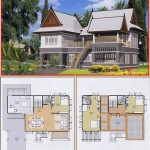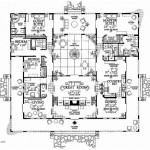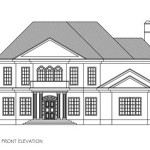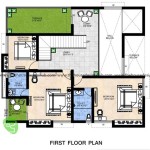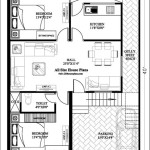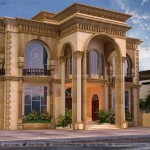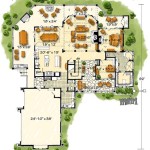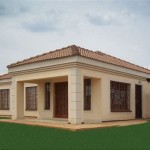Here's an article focused on Pretty Good House Plans, designed to be informative, professional, and meeting your specified requirements:
Understanding Pretty Good House Plans: Balancing Performance and Affordability
The term "Pretty Good House," often abbreviated PGH, represents a pragmatic approach to building energy-efficient and durable homes. It acknowledges that achieving Passive House standards, while desirable, can be cost-prohibitive for many homeowners. PGH plans aim to strike a balance between performance and affordability, offering significant improvements over standard building practices without requiring the most stringent, and therefore expensive, measures.
The Pretty Good House concept focuses on addressing the most critical aspects of building science to minimize energy consumption and maximize comfort. This involves prioritizing a well-insulated building envelope, airtightness, and efficient ventilation. It doesn't necessarily mandate specific technologies or materials, allowing builders and homeowners flexibility to choose options best suited to their budget and local climate.
The philosophy behind PGH is that achieving substantial energy savings is possible by focusing on core principles rather than adhering to a rigid set of rules. It encourages builders to think critically about building performance and to prioritize investments in areas that will yield the greatest return, both in terms of energy savings and long-term durability.
Key Principles of Pretty Good House Design
Several key principles underpin the Pretty Good House approach. These are not prescriptive rules but rather guidelines that inform design and construction decisions. Adhering to these principles allows for a flexible and cost-effective path toward a high-performing home.
One of the most important aspects is
exceptional insulation
. This means exceeding standard code requirements for insulation in walls, roofs, and floors. The specific insulation levels will vary depending on the climate zone, but the goal is to minimize heat loss during the winter and heat gain during the summer. This reduces the load on heating and cooling systems, leading to lower energy bills and improved comfort.Another crucial principle is
focus on airtightness
. Air leakage is a major source of energy loss and can also contribute to moisture problems within the building envelope. Achieving a tight building envelope requires careful detailing and execution during construction. This includes sealing all penetrations, using airtight membranes, and implementing strategies to minimize air infiltration through walls, roofs, and floors. A blower door test is a common method to measure the airtightness of a building.Finally,
implementation of proper ventilation
is an essential aspect. While airtightness is critical, controlling indoor air quality is equally important. A well-designed ventilation system ensures a constant supply of fresh air while exhausting stale, humid, or contaminated air. This can be achieved through natural ventilation or mechanical ventilation systems, such as heat recovery ventilators (HRVs) or energy recovery ventilators (ERVs). These systems not only provide fresh air but also recover heat or energy from the exhaust air, further reducing energy consumption.Cost Considerations and Trade-offs
The cost of building a Pretty Good House will typically be higher than building a standard code-compliant home. However, the increased upfront investment is often offset by long-term energy savings and reduced maintenance costs. The key is to prioritize investments in areas that will yield the greatest return.
One area where cost-effective trade-offs can be made is in the selection of materials. While high-end, eco-friendly materials can be desirable, they are not always necessary to achieve the goals of a Pretty Good House. Choosing cost-effective insulation materials, such as fiberglass or cellulose, and focusing on proper installation can be a viable option. Similarly, opting for durable and readily available siding and roofing materials can help to keep costs down without sacrificing performance.
Another way to manage costs is to carefully consider the size and complexity of the house design. A smaller, simpler design will generally be less expensive to build and maintain than a larger, more complex design. Reducing the building's surface area to volume ratio can improve energy efficiency. Simplifying the roofline and avoiding unnecessary architectural features can also help to reduce costs and improve airtightness.
Furthermore, carefully consider the heating and cooling systems. While high-efficiency systems are often recommended, they may not always be the most cost-effective option. In some cases, a well-insulated and airtight house may require a smaller, less expensive heating and cooling system than a standard code-compliant house. Consult with a qualified mechanical engineer or HVAC professional to determine the optimal system size and type for the specific project.
Benefits Beyond Energy Savings
While energy savings are a primary benefit of Pretty Good House plans, there are numerous other advantages to building a high-performance home. These include improved indoor air quality, increased comfort, enhanced durability, and reduced environmental impact.
Improved Indoor Air Quality:
A well-ventilated home ensures a constant supply of fresh air, reducing the concentration of pollutants such as dust, allergens, and volatile organic compounds (VOCs). This can lead to improved respiratory health and overall well-being. The use of low-VOC materials and finishes can further enhance indoor air quality.Increased Comfort:
A well-insulated and airtight home is more comfortable to live in. Consistent temperatures throughout the house, reduced drafts, and minimized noise from outside contribute to a more pleasant living environment. The elimination of cold spots and drafts improves the thermal comfort of the home, making it more enjoyable to occupy.Enhanced Durability:
A properly designed and constructed Pretty Good House is more durable than a standard code-compliant home. Careful attention to moisture management helps to prevent rot, mold, and other forms of deterioration. The use of durable materials and proper detailing ensures that the house will last longer with less maintenance. The emphasis on airtightness prevents moisture from entering the wall cavities and causing damage.Reduced Environmental Impact:
By reducing energy consumption, Pretty Good House plans contribute to a lower carbon footprint and a more sustainable future. The use of sustainable materials and construction practices can further minimize the environmental impact of the building. The reduction in reliance on fossil fuels helps to mitigate climate change and conserve natural resources.Ultimately, Pretty Good House plans offer a practical and cost-effective approach to building high-performance homes. By prioritizing key principles such as insulation, airtightness, and ventilation, builders and homeowners can achieve significant energy savings, improve indoor air quality, and enhance the durability of their homes. The flexibility of the PGH approach allows for customization and adaptation to specific site conditions, budgets, and homeowner preferences.
The long-term benefits of building a Pretty Good House extend beyond energy savings, contributing to a healthier, more comfortable, and more sustainable living environment. While the upfront investment may be higher than building a standard code-compliant home, the long-term return on investment is often significant.

Pretty Good House
The Pretty Good House Meldrum Design

Pretty Good House Plans By Korel Home Designs How To Plan

The Pretty Good House Greenbuildingadvisor

Our Most Beautiful House Plans With Photos Houseplans Blog Com

Our Most Beautiful House Plans With Photos Houseplans Blog Com

Photo 2 Of 6 In Here S What It Takes To Build A Pretty Good House Dwell

The Pretty Good House 2 0 Is A Building Standard Now With Embodied Carbon Passive Design Designs

Est House Plans To Build Simple With Style Blog Eplans Com

28 Modern House Designs Floor Plans And Small Ideas

